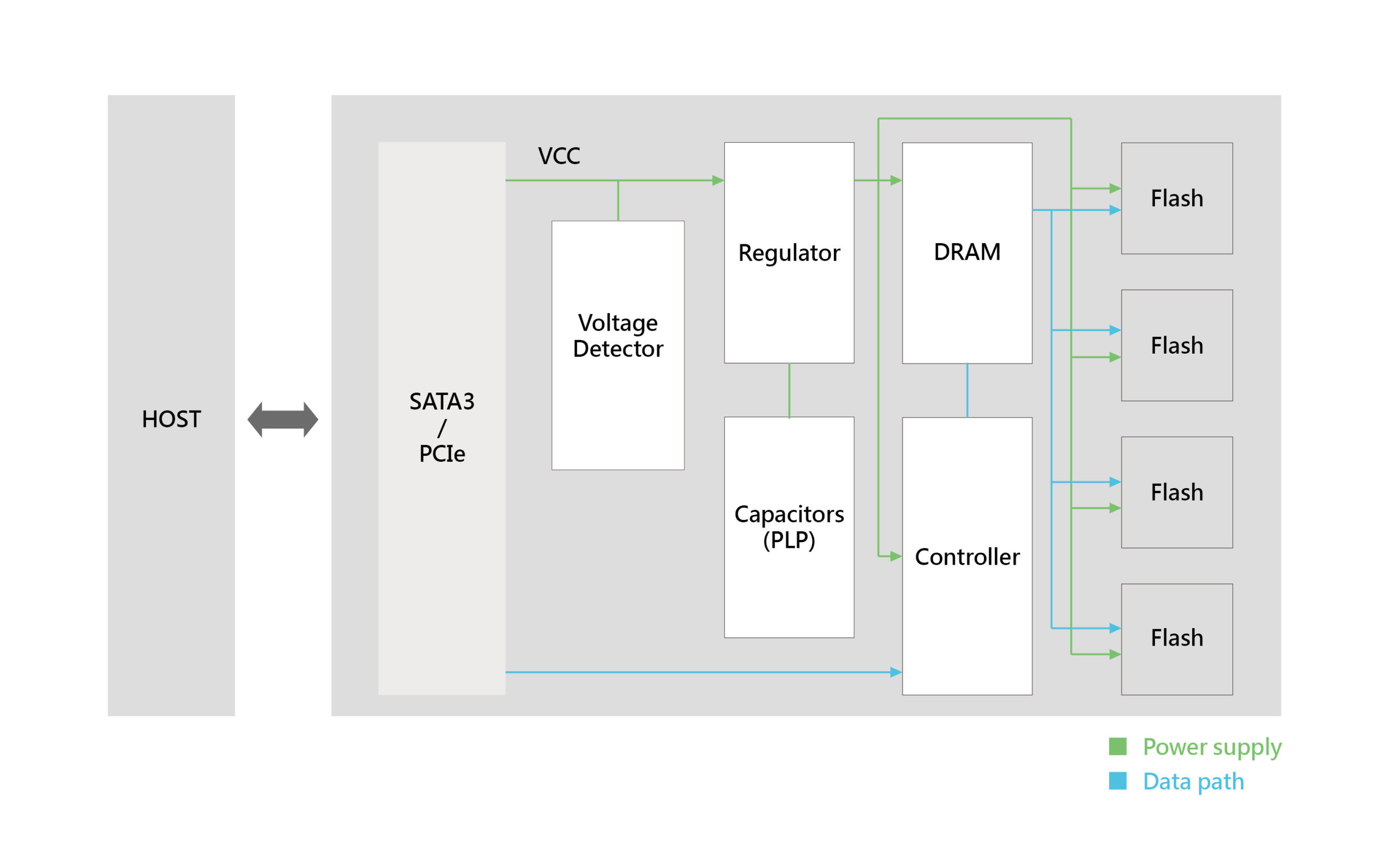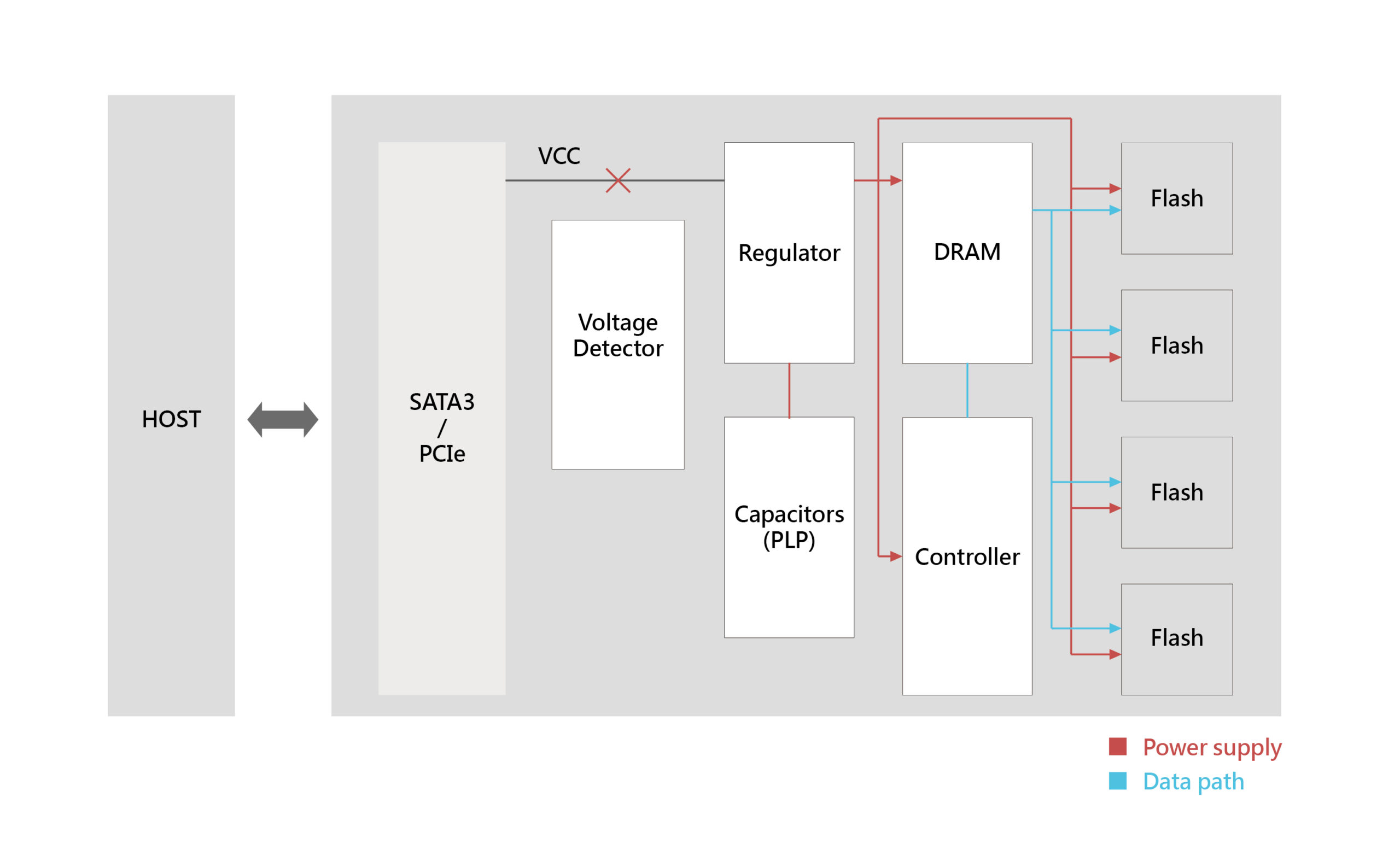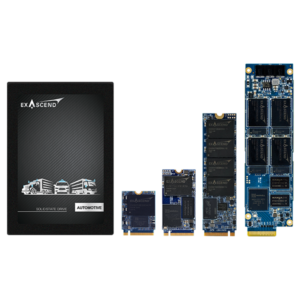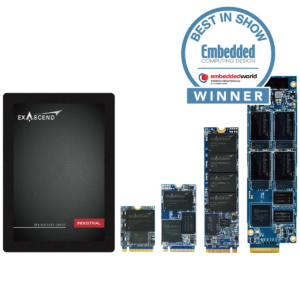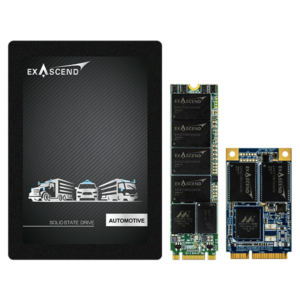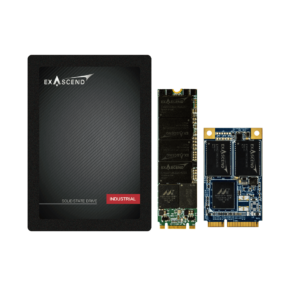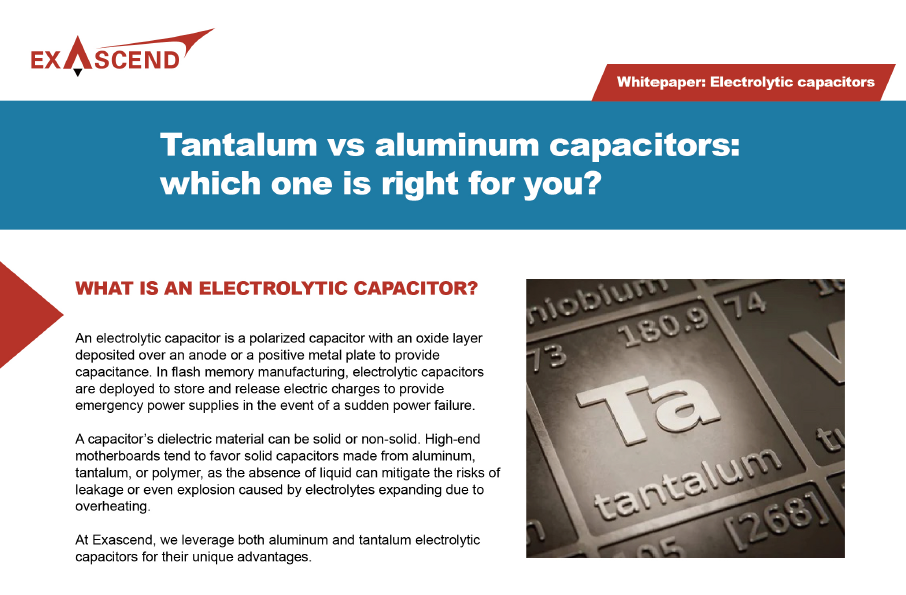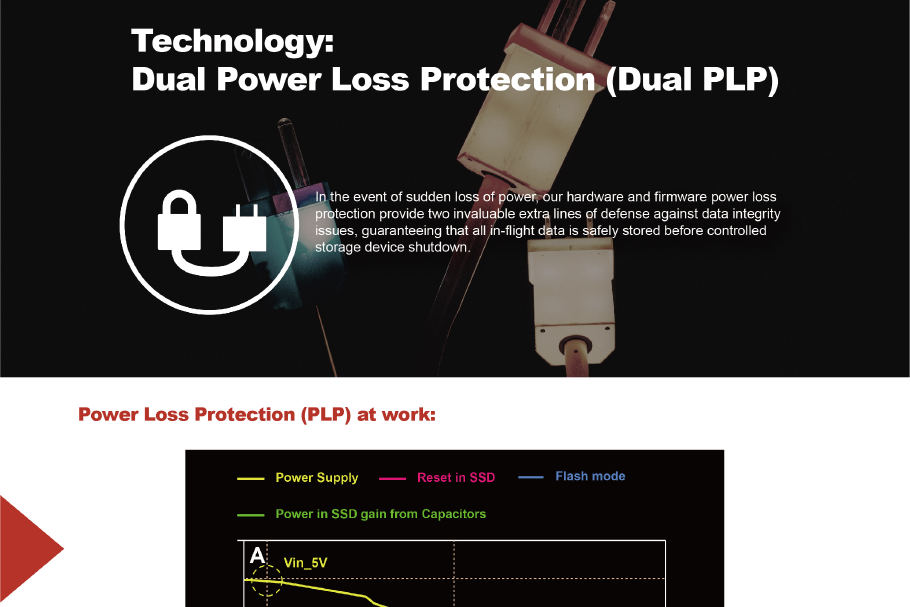
Dual Power Loss Protection
Combining Hardware and Firmware Technology to Secure Data Integrity during Power Failure
Exascend’s Dual Power Loss Protection technology is an advanced solution designed to effectively counteract the potentially disastrous consequences of abrupt power outages on flash storage and their associated data.
The sudden loss of power to a flash storage device can result in the loss of in-flight data and data that has not yet been stored in the non-volatile NAND flash, rendering it irretrievable. Moreover, there is a significant risk of severe corruption to the mapping table, which serves to track the storage locations within the NAND flash. This corruption can render the storage device inoperable when power is restored.
To address these vulnerabilities, Exascend employs a comprehensive strategy that encompasses both hardware and firmware components within its Dual Power Loss Protection technology.
Firmware-based protection
The firmware-based power loss protection from Exascend ensures a rapid and seamless reconstruction of the mapping table once power is reinstated. This enables uninterrupted use of the SSD by the application, as if the power loss had not occurred. Exascend employs several cutting-edge firmware technologies to achieve this, including:
- Firmware Integrity Plus™, which maintains multiple firmware backups on the flash page, guaranteeing ready access to the most recent firmware copy.
- RAID ECC and LDPC algorithms, capable of retrieving and reconstructing even severely corrupted data.
- Data Path Protection, which guarantees the integrity of transit data and data being relocated for garbage collection purposes.
Together, these technologies ensure the utmost reliability and health of both stored and in-flight data, safeguarding them from corruption or harm caused by incomplete write operations.
Hardware-based safeguards
On the hardware front, Exascend’s Dual Power Loss Protection integrates tantalum capacitors. These capacitors retain sufficient additional power, allowing the storage device to flush any remaining data to the non-volatile flash prior to being compelled to shut down due to power loss.
In the event of a routine power shutdown, the host system will issue a command to the SSD, instructing it to save any in-flight data that is stored in the DRAM cache to the NAND flash prior to completing the shutdown process. This process is illustrated in Figure 1.
In the event of an unexpected power loss, the SSD’s voltage detector will activate PLP once it detects that the voltage has fallen below 4V. At this point, the tantalum capacitors, which serve as backup batteries, will provide additional power to the SSD, allowing it to complete the writing of data to the NAND flash. This process is depicted in Figure 2.

Extended Data Flushing Time for High-Capacity Storage
For higher-capacity SSDs, the time required to flush in-transit data to the NAND flash naturally increases, contingent upon the volume of data the DRAM cache can accommodate. However, due to controller load limitations, the SSD’s DRAM buffer size typically reaches a maximum of 8 MB. Consequently, in the event of a power loss, the SSD may take approximately 6ms to finalize a write operation.
Exascend’s Dual Power Loss Protection-enabled SSDs incorporate capacitors in a manner that extends the data flushing time to a remarkable 29ms, well beyond the requirements of higher-capacity SSDs currently available on the market.
Holistic Defense against Power Loss
In combination, Exascend’s firmware-based and hardware-based power loss protection mechanisms provide a robust defense against abrupt power losses and the potential catastrophic ramifications they could otherwise induce.
| Exascend SSD | Hardware PLP | Firmware PLP |
|---|---|---|
| M.2 | Upon request | ✓ |
| 2.5-inch / U.2 / E1.S | ✓ | ✓ |
Recommended products
- PCIe Gen4 x4 / NVMe 1.4
- Up to 15.36TB storage
- Up to 3,500 MB/s sustained performance
- Op. Temp -40°C to 85°C
- Conformal Coating and Underfill featured
- PCIe Gen4 x4 / NVMe 1.4
- Up to 15.36TB storage
- Up to 3,500 MB/s sustained performance
- Op. Temp -40°C to 85°C
- SATA-III, 6.0Gbps
- Up to 7.68TB storage
- Up to 550 MB/s sustained performance
- Op. Temp -40°C to 85°C
- Conformal Coating and Underfill featured
- SATA-III, 6.0Gbps
- Up to 7.68TB storage
- Up to 550 MB/s sustained performance
- Op. Temp -40°C to 85°C
White paper: Tantalum vs aluminum capacitors: which one is right for you?
At Exascend, we leverage both aluminum and tantalum electrolytic capacitors for their unique advantages. Read on to learn more.


